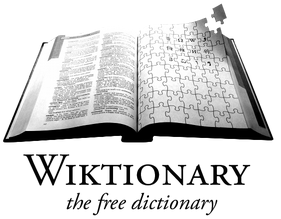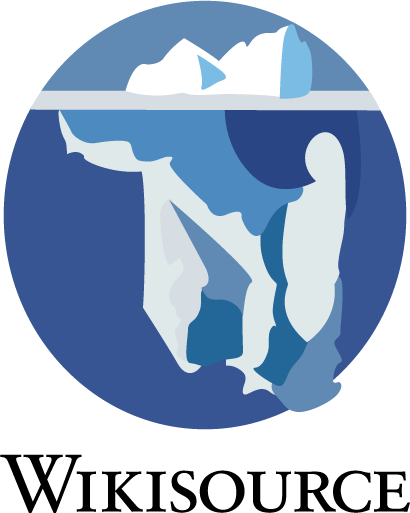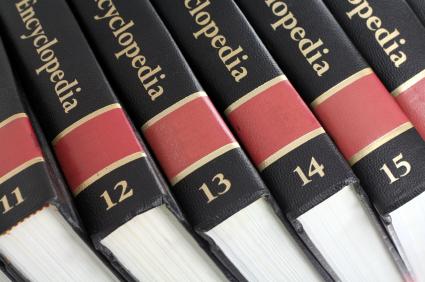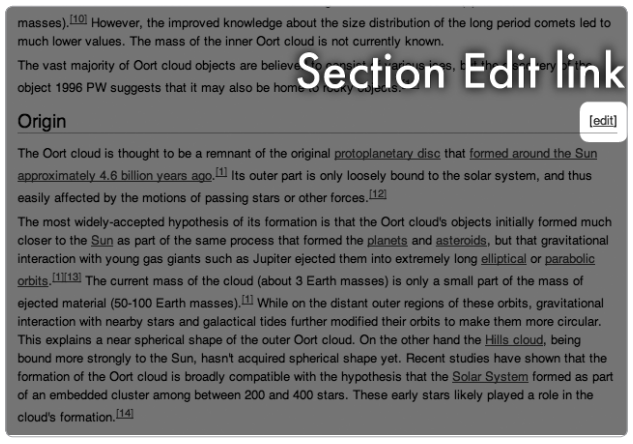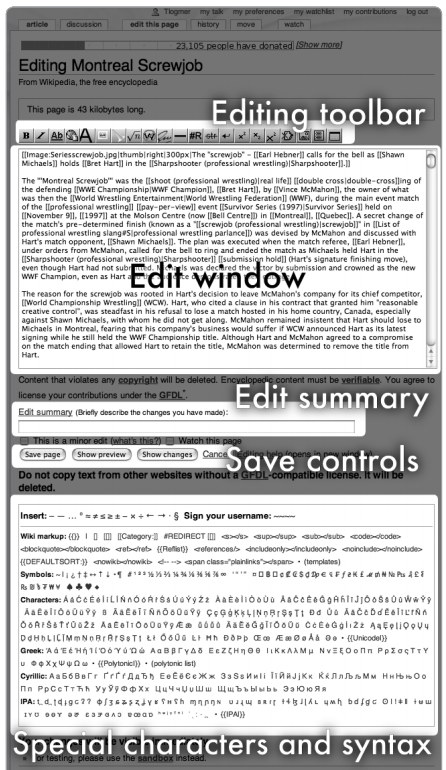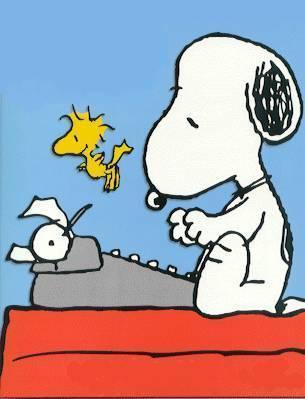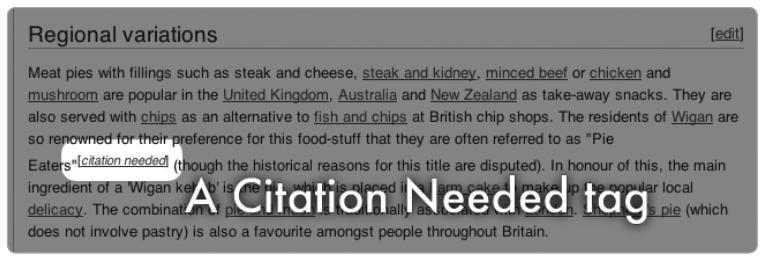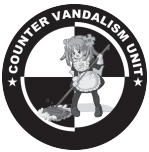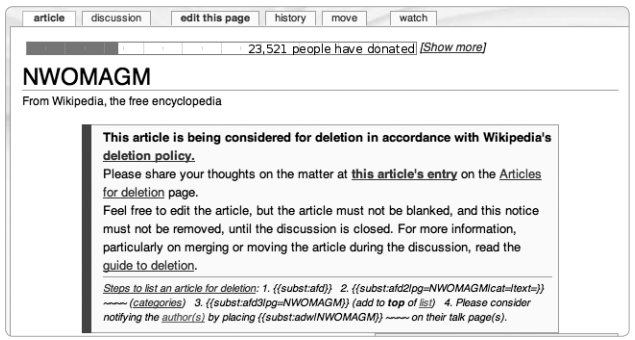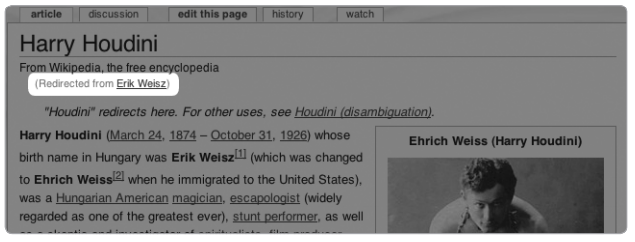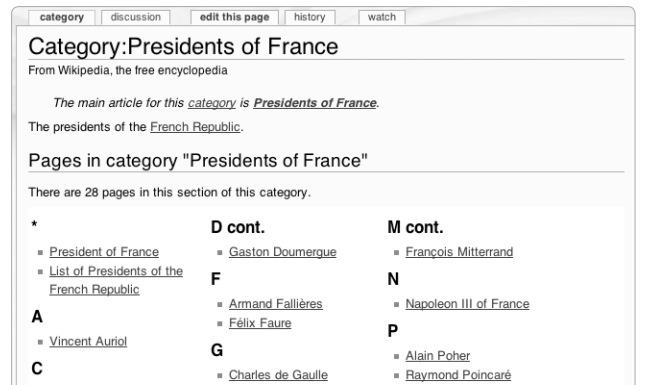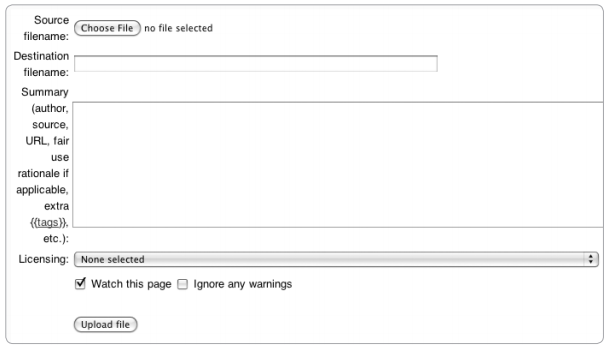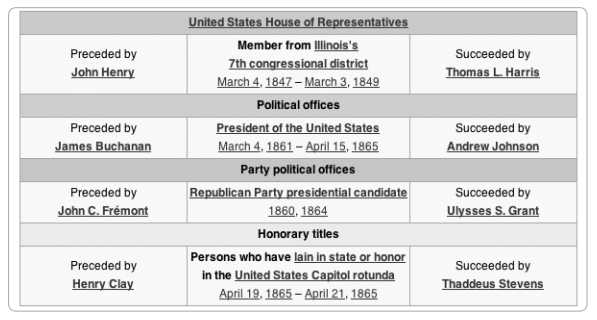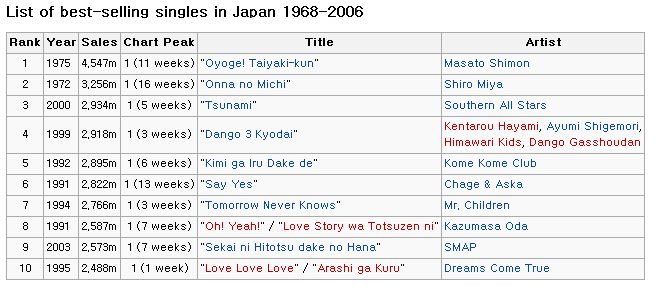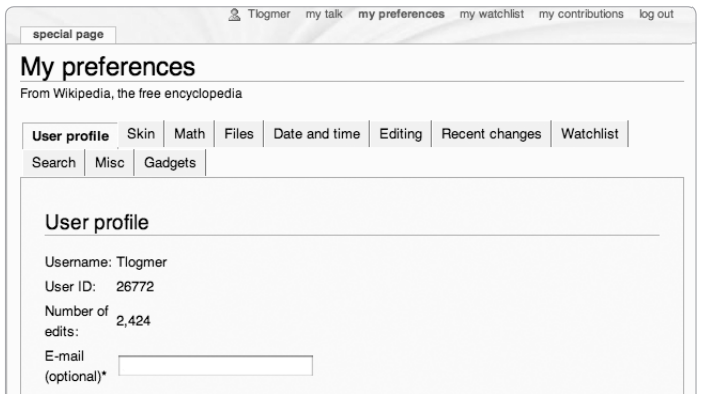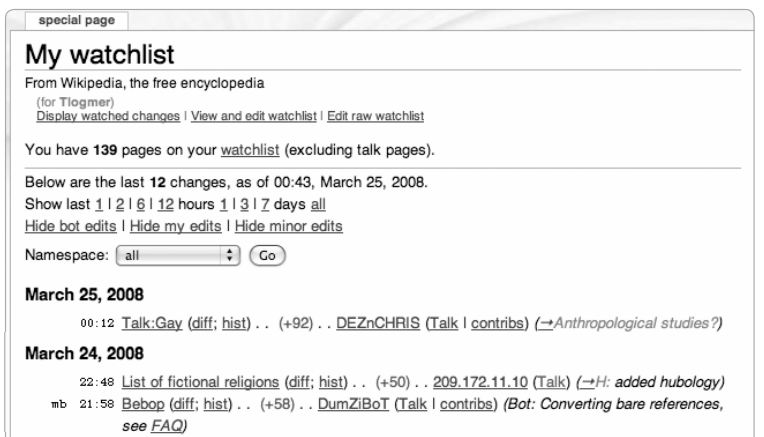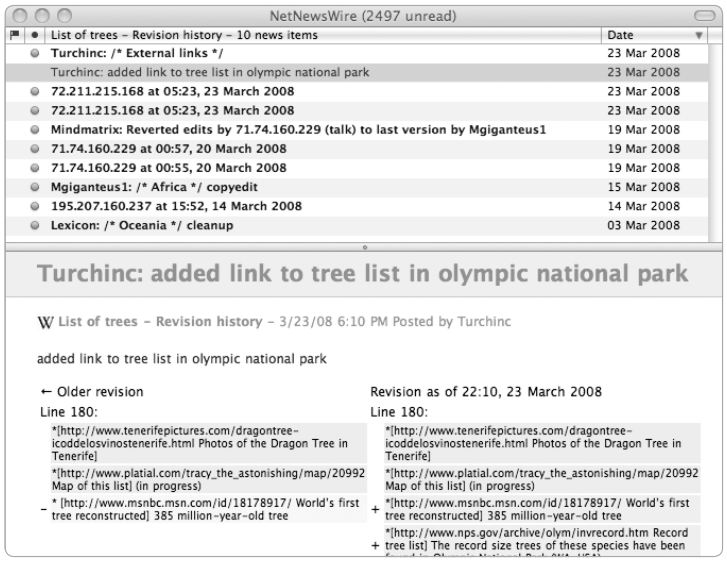Wikipedia for Editors: Difference between revisions
David Parkin (talk | contribs) |
(No difference)
|
Latest revision as of 16:34, 7 February 2015
<slideshow style="nobleprog" headingmark="⌘" incmark="…" scaled="true" font="Trebuchet MS" >
- title
- Wikipedia for Editors
- author
- Bernard Szlachta (NobleProg Ltd)
</slideshow>
Copyright Notice
Copyright © 2004-2025 by NobleProg Limited All rights reserved.
This publication is protected by copyright, and permission must be obtained from the publisher prior to any prohibited reproduction, storage in a retrieval system, or transmission in any form or by any means, electronic, mechanical, photocopying, recording, or likewise.
What is Wikipedia ⌘
- Free encyclopedia
- Donation
- Wikimedia foundation
- Developed by community
- No central authority
Contents ⌘
Part I: Content
Part II: Editing
Part III: Community
Part IV: Other Projects
Part I: Content ⌘
- What’s in Wikipedia?
- The World Gets a Free Encyclopedia
What’s in Wikipedia? ⌘
- Types of Articles
- Article and Content Inclusion Policies
- Core Policies: V, NOR, and NPOV
- Understanding the Policies
- Other Guidelines
- What Wikipedia Is Not
- Non-article Content
- Types of Non-article Pages
- Namespaces
Types of Article ⌘
Traditional encyclopedia topics
You can find all the types of content that you might expect from a general encyclopedia
People
No occupations or groups are restricted or emphasized, although in order to qualify for an article, the person must be notable, that is, well known within his or her major field of endeavor
Fictional characters
Articles about well-known fictional characters are included.
Types of Article ⌘
Places
There are articles not just on countries, provinces, and major geographical features but also about cities and towns worldwide.
Media—movies, books, albums, songs, television shows (and their episodes), videogames, and more
Work in almost any medium can be considered for its own article.
Companies and organizations
There are factual articles about most well-known corporations. As with biographies, writing about your own organization or company is discouraged.
Types of Article ⌘
Computer software and hardware
Thousands of articles about programming languages, software, hardware, and computer science theory.
Transport
Thousands of articles about railway stations, canals, airports, and other minutiae of transport networks.
Lists
Lists can be about nearly about any topic. Linked lists are a defining feature of Wikipedia.
Types of Article ⌘
Redirects
These pages simply push you from one page title to another automatically.
Disambiguation pages
These pages include a whole list of links to possible articles that have similar names.
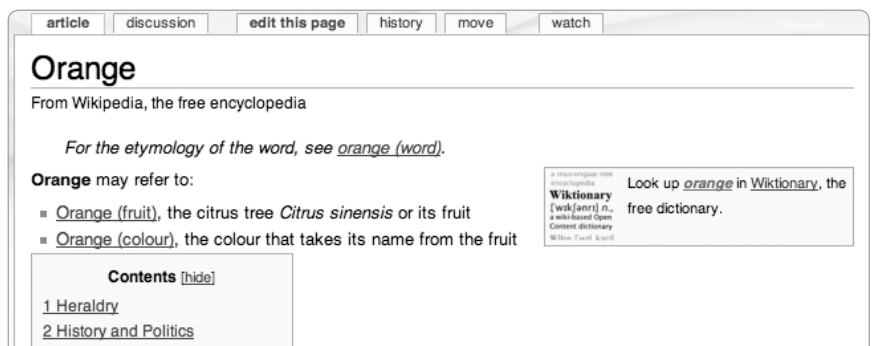
Article and Content Inclusion Policies ⌘
Core Policies: V, Nor, and NPoV
Verifiability (V)
You should always be able to verify that the content of a Wikipedia article is factual, using reliable outside sources that are cited within the article.
No Original Research (NOR)
To prevent spreading new ideas Wikipedia from being used as a soapbox to spread new ideas, ideas and facts must be previously published elsewhere by a third party.
Neutral Point of View (NPOV)
Similar to what journalists mean by objectivity in reporting.
Article and Content Inclusion Policies ⌘
Other Guidelines
Notability
- helps set a baseline level for inclusion to prevent Wikipedia from becoming something other than an encyclopedia.
- the most common reason why a topic is deemed unsuitable for a Wikipedia article.
- easy to think about superficially but difficult to apply or cleanly define in the abstract.
Warnings of Notability
Notability may be perishable
Notability is not the same as having a fan, reputation or distinction
Article and Content Inclusion Policies ⌘
Other Guidelines
Copyrighted Material
- Plagiarism is NOT allowed.
- Any materials must be specifically licensed under the **GNU Free Documentation License (GFDL), which is a “free license”
***GNU Free Documentation License (GFDL)
Anyone can reuse and redistribute the content for any purpose without asking permission, as long as they meet certain conditions; the content can be used on other sites or even republished in print.
Article and Content Inclusion Policies ⌘
Other Guidelines
Copyrighted Material
- Materials taken from other places generally shouldn NOT appear on Wikipedia.
- You should NOT take text or photos from the Internet or elsewhere and reproduce them on Wikipedia without explicit permission; copying any work that is not in the public domain or explicitly licensed as being freely available is a copyright violation.
It is best, in almost all cases, to simply write the article afresh!
Article and Content Inclusion Policies ⌘
Understanding the policies
Verifiability (V)
You should always be able to verify that the content of a Wikipedia article is factual, using reliable outside sources that are cited within the article.
No Original Research (NOR)
To prevent spreading new ideas Wikipedia from being used as a soapbox to spread new ideas, ideas and facts must be previously published elsewhere by a third party.
Neutral Point of View (NPOV)
Similar to what journalists mean by objectivity in reporting.
Article and Content Inclusion Policies ⌘
Other Guidelines
Non-encyclopedic Content
- Some non-encyclopedic content is inappropriate for Wikipedia but may be welcome on other sister Wikimedia projects
For instance,
- Definitions of words (without supporting encyclopedic information) are outside of Wikipedia’s scope.
- A definition alone is not sufficient for a Wikipedia article.
- However, dictionary definitions are very welcome at Wiktionary, Wikimedia’s free dictionary project.
Article and Content Inclusion Policies ⌘
Other Guidelines
Non-encyclopedic Content
- Original reporting of events is also NOT a part of Wikipedia; violates the No Original Research or Verifiability policy.
- “how-to” article may not be encyclopedic, but would be just fine over at Wikibooks, Wikimedia’s project to write free textbooks.
Article and Content Inclusion Policies ⌘
Other Guidelines
Non-encyclopedic Content
- Original source documents (for example, the text of Coleridge’s “Rime of the Ancient Mariner”) are not welcome on Wikipedia, but that is because primary sources belong on Wikisource.
What Wikipedia is NOT ⌘
Wikipedia is NOT an indiscriminate collection of information, a directory, or a dictionary.
It’s an encyclopedia (and preferably a well-rounded one) in which criteria such as notability are used to weed out entries.
Wikipedia is NOT a paper encyclopedia.
No printing costs, no physical restrictions on growth. No restrictions on what branches of human knowledge should be included.
Wikipedia is NOT a publisher of original thought, nor a soapbox.
No Original Research: Wikipedia is not interested in personal essays. No reviews of products, companies, and No personal opinions—whether positive or negative—are unwelcome in Wikipedia articles.
What Wikipedia is NOT ⌘
Wikipedia is NOT a mirror, repository of files, a blog, webspace provider, or social networking site.
- Wikipedia is a project with a very specific purpose—to create and distribute an encyclopedia.
- It is not a helpful web application for storing other unrelated information.
Wikipedia is NOT static.
- The encyclopedia is an open-ended work in progress, and Wikipedia articles are, by definition, always provisional.
- This attitude reflects a shared view of knowledge as something that by its nature is dynamic and expanding, rather than settled.
What Wikipedia is NOT ⌘
Wikipedia is NOT a crystal ball.
- This is a warning about posting rumor and speculation about future events, such as gossip about films that are currently in production.
Some content may be considered offensive or inappropriate.
The lack of censorship can cause distress— there are many hundreds of articles about topics that many people would prefer not to think about. Considering that the aim is to be a repository of all human information, written by a truly diverse group of people from all over the world, this is unavoidable.
Non-article Content ⌘
Types of Non-article Pages
User pages and user talk pages
- They are set aside as a private space where editors can work.
- To communicate , editors leave notes on user talk pages.
- e.g. User_talk:Bernard.szlachta, Talk:Obama, etc...
Policy pages and guidelines
- Provide guidance about editing content and interacting with other volunteers.
- Policies and guidelines lay out stylistic guidelines for editing, content inclusion policies, procedures to resolve disputes, and much more.
- e.g. Wikipedia:Guidelines or wp:guildlines for short
Quiz ⌘
- Find the Neutral Point of View policy page
- What is the shortcut for the page above?
Non-article Content ⌘
Types of Non-article Pages
Community discussion, procedural, and project pages
the community discuss proposals and coordinates editing projects.
Help pages
Include documentation of editing syntax, technical procedures, and best practices, and are referenced throughout this book.
Non-article Content ⌘
Types of Non-article Pages
Image description pages
- Each image is coupled with an image description page.
- These pages exist to provide the image with a textual description (metadata).
Mediawiki-generated special pages and administrative pages
Generated on the fly by the MediaWiki software and serve as utilities rather than editable pages. Used for special lists and essential pages, such as the account creation pages.
Non-article Content ⌘
Namespaces
- Each type of page is distinguished by a prefix
- Each prefix is actually an indicator that the page is inside a particular namespace.
http://en.wikipedia.org/wiki/Benjamin_Franklin http://en.wikipedia.org/wiki/Talk:Benjamin_Franklin
2: World Gets a Free Encyclopedia ⌘
Wikipedia’s Mission
Wikipedia’s Roots
Wikipedia's Mission ⌘
Its mission is to make the whole world’s information available in all languages.
“Imagine a world in which every single person on the planet is given free access to the sum of all human knowledge. That’s what we’re doing.”
—Jimmy Wales,
Wikipedia founder
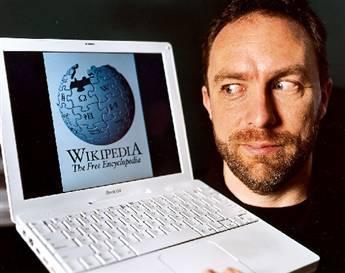
Wikipedia's Root ⌘
Wikipedia as an encyclopedia
Wikipedia carries on these encyclopedist traditions but with some radical changes.
- Technological: online; no limit of the economics of printing.
- Non-commercial: ease of access; broader topics
The 1960s and 1970s: Unix, Networks, and Personal Computers
The 1980s: The Free software Movement - The GNU project
1995: ward’s **wiki
1997: open source Communities
2000: online Community dynamics
**Wiki
A wiki is a type of website that anyone can edit.
Wikipedia's Root ⌘
Wikipedia as a Wiki Community
- Embracing the history of encyclopedias
- The openness of free software, and
- the easily accessible,
- collaborative aspects of online communities
2001: Wikipedia Goes Live - immediate success!
wikipedia Today
Part II: Editing ⌘
3: Basic Editing
4: Cleanup, Projects, and Processes
5: Make and Mend Wikipedia’s Web
6: Images, Templates, and Special Characters
7: The Life Cycle of an Article
3: Basic Editing ⌘
Editing a Page
- Understanding the Edit Window
- Major vs. Minor Edits
- Handling Major Editing Tasks
- Fixing Mistakes and Other Reasons to Revert
- Who Can Edit What?
- Syntax Fundamentals of Text Markup
Internal and External Links
- Sections and Headings
- Removing Formatting and Hiding Comments
Exercise ⌘
- Register or Log in
- Create a user sandbox page (User:yourusername/sandbox, e.g. wiki/User:Bernard.szlachta/sandbox
Editing a Page ⌘
Editing a Page ⌘
Major vs. Minor Edits
Minor edit
An edit that the editor believes requires no review by other editors. For example,
- spelling or grammatical corrections,
- adding a single internal link,
- fixing punctuation,
- or making small formatting or presentational changes.
Q: Changing a single date in an article, say 1776 to 1676 ? Minor ?
A minor edit should NOT
substantially change the meaning of an article
Editing a Page ⌘
Major vs. Minor Edits
Major edits
- comprise all other edits.
- Any change that affects the meaning of an article is major (not minor), even if the edit is a single word.
- The modifications ought to be checked
Editing a Page ⌘
Handling Major Editing Tasks
- be bold
- break large editing into small stages
- discuss proposed changes on the article talk page before implementing
- work section-by-section in longer articles
- write an overall, final edit summary to document the changes
Editing a Page ⌘
Fixing Mistakes and Other Reasons to Revert
All versions of every article are saved, you can always revert a page back to a previous version.
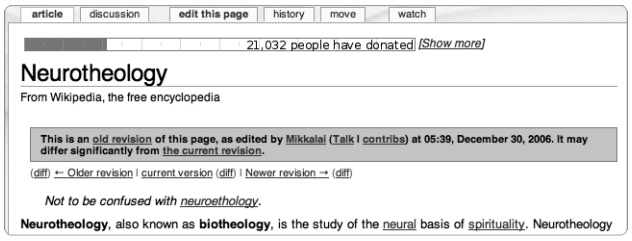
Editing a Page ⌘
Who Can Edit What?
- Can be edited by anyone, whether logged in or not.
- The rare exceptional pages not open to editing include some system-generated pages and a few key pages that are permanently restricted, such as the main page.
Editing a Page ⌘
Who Can Edit What?
Protection
A small number of other pages at any given time have been closed to editing with an administrative action.
- Fully Protected Page: editable only by site Administrators
- Semi-protected Page: editable by the vast majority of logged-in users
Editing a Page ⌘
Syntax
Wikisyntax, wikimarkup or wikitext
A special markup language for formatting pages used in Wikipedia
Fundamentals of Text Markup
- Bold and Italic
- Indentation, Line, and Paragraph Breaks
- Numbered and Bullet Lists
- Sections and Headings
- Linking into and out of Sections
- Removing Formatting and Hiding Comments
Editing a Page ⌘
Internal and External Links
Internal Links (wikilinks)
- Creating an internal link to another page on Wikipedia by enclosing the name of the page you wish to link
- Should not contain underscores
Internal Linking Policy
- Not too many and not too few!
- No need to link every common noun
- Link to the most specific concept you can
- Do not introduce self-links
- Avoid splitting a single concept
Editing a Page ⌘
Internal and External Links
Internal Links (wikilinks)
- Creating an internal link to another page on Wikipedia by enclosing the name of the page you wish to link
- Should not contain underscores
Internal Linking Policy
- Not too many and not too few!
- No need to link every common noun
- Link to the most specific concept you can
- Do not introduce self-links
- Avoid splitting a single concept
Editing a Page ⌘
Internal and External Links
Redlinks
Links to a page that does not exist yet.
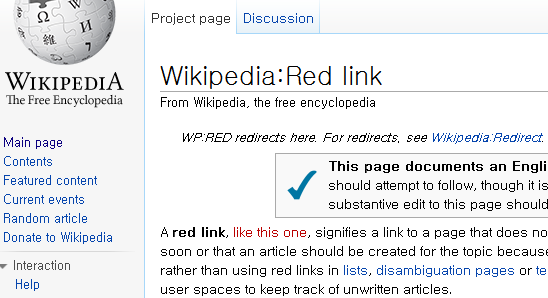
Editing a Page ⌘
Internal and External Links
External Links
- Links to other websites.
- always light blue and marked with a small arrow
- Normally appear at the bottom of an article in the 'External Link' section
- Simply paste the URL (with the http:// prefix)
Editing a Page ⌘
Internal and External Links
External Policy
- Directly relevant to the topic of the article
- Commercial pages or sites that only exist for selling a product are not included
- Some whole sites should not be linked to
- Sites in languages other than English are discouraged
4: Cleanup, Projects and Processes ⌘
Cleanup
- Flagging Articles
- Cleanup Categories
Cleanup Tasks
- Rewriting
- Expanding Stubs
- Wikification
- Vandalism Patrolling
- Cleanup Editing Tools
Projects: Working to Improve Content
- WikiProjects
- Wikiportals
- Writing Collaborations
Processes
- What Processes Cover
- Deleting Articles
- Featured Articles
Cleanup ⌘
Flagging Articles
Cleanup
The general term for improving articles
Flags
The cleanup message you will see at the top of many articles

Cleanup ⌘
Cleanup Categories WP:TC
Adding a cleanup message to an article will automatically place the article in an associated cleanup category
Adding a cleanup message to an article will automatically place the article in an associated cleanup category
The categories have backlogs—large numbers of articles awaiting attention.
Cleanup Tasks ⌘
Rewriting
Poor writing
- start with a poorly written draft (not a proficient writer or not a native speakers)
- gradually become unclear
- no appropriate tone or style
* Template:Copyedit
Addresses any problem with grammar, style, cohesion, tone or spelling
* Template:Advert, Template:Fansite, Template:Gameguide, Template:Likeresume,Template:Newsrelease, Template:Obit, Template:Review, Template:Story
Address Problems with inappropriate tone and style
* Template:Abbreviations, Template:Buzzword, Template:Cleanup-jargon, Template:Inappropriate person, Template:Quotefarm, Template:Toospecialized
Address composition problems
* Template:Contradict, Template:Misleading, Template:Unbalanced, Template:Limitedgeographicscope, Template:Weasel
Address problems with content and presentation
Cleanup Tasks ⌘
Expanding Stubs
Stub articles
Beginning articles that need to be expanded with more information on the topic.
If you don’t want to write an entire article from scratch but enjoy the research and writing process, try expanding one of these articles! [ [ Category:Articles_to_be_expanded ] ]
Cleanup Tasks ⌘
Wikification
Wikification
The changing of any text into wikitext, including marking it with wikisyntax, structuring the article into logical
sections, and adding internal link.
In broader sense, means "formatting according to Wikipedia style"

Cleanup Tasks ⌘
Fact-Checking and Referencing
Wikipedia has several templates that alert both editors and readers that citations are needed in an article:
- Template:Unreferenced - an article doesn’t cite any sources at all
- Template:Refimprove - some sources exist but more are needed
Cleanup Tasks ⌘
Help, an Article About Me Is Incorrect!
Discussion
Issues can be discussed on the talk page for any article.
The best first step toward getting a problem resolved.
Editing
You can simply edit the article. Before that, you should consult Wikipedia:Conflict of interest
Email route
Your best recourse is to send an email, as explained at Wikipedia:OTRS (shortcut WP:OTRS), detailing the problem.
This channel is the official complaint mechanism.
Cleanup Tasks ⌘
Copyright Violations
Copyright violations
Caused by people cutting and pasting material from other sites into an article, which you can detect by searching the Web
for the passage.
- If only a sentence or two was copied and the source is simply unattributed, then rewriting and citing the source may
solve the problem.
- If, however, an entire article or most of it has been copied from a single source (as is more common with cut-and-paste
violations), then a copyright violation has occurred
Cleanup Tasks ⌘
Copyright Violations
Removing Copyright Violations
- The text can be reverted to a good version
- Rewrite the text yourself - be careful not to paraphrase
- If you aren’t certain that a copyright violation has occurred, use Template:Copyvio, which will trigger a more
measured deletion process.
- If you are sure the article violates copyright and that the text or topic does not seem to have any redeeming value, you
may want to use the speedy delete tag Template:Db-copyvio, which will ensure rapid administrator attention
Cleanup Tasks ⌘
Vandalism
- A change made to Wikipedia with the malicious intention of having a negative effect on the content.
- Anyone can just revert obvious vandalism
- check the diff of the edit along with the editing history to determine vandalism
- Many tools and systems have been developed to detect (and sometimes automatically correct) vandal edits; the Counter-
Vandalism Unit, found at Wikipedia:Counter-Vandalism Unit
Cleanup Tasks ⌘
Cleanup Editing Tools
Many cleanup editing tasks (such as correcting spelling or fixing typos) are repetitive, and for these you can use editing
tools.
These tools help power editors get dull tasks done quickly (though editors are always responsible for the edits they make,
regardless of whether they used an automated tool or not).
Projects: Working to Improve Content ⌘
The fundamental problem of the Wikipedia method is that massive collaboration is *hard*.
—David Gerard, WikiEN-l mailing list, 9 October 2007
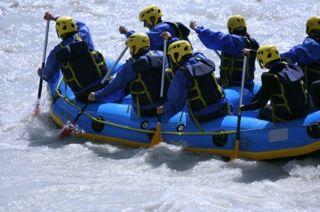
Projects: Working to Improve Content ⌘
WikiProjects
A loose grouping of editors who have banded together
- WikiProject Amphibians and Reptiles.
- WikiProject Philately
- WikiProject Skateboarding
- WikiProject Chemistry ...
Processes ⌘
- A page, or a suite of pages, normally found in the Wikipedia namespace where editors discuss proposed decisions.
- public, open, and transparent
- Confidence-building mechanism
- Rely on community consensus as well as policy for making decisions
Consensus
general agreement among participants within a specified time period (almost all processes put time limits on discussion)
==== Processes ⌘==== 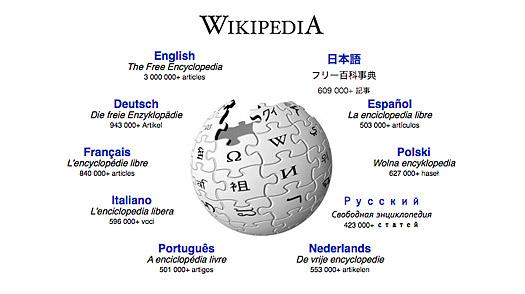 Process, community, and policy
Process, community, and policy
These are key concepts for how Wikipedia works
—the real Wikipedia, not a utopian clone
Processes ⌘
What Processes Cover
- Wikipedia has numerous processes, dealing with both content and community. (include some that implement Wikipedia's official policies such as the deletion processes)
- Others focus on making specific maintenance tasks routine (such as renaming categories or approving bots)
Deleting Articles ⌘
- For Wikipedia’s worst content
- Generally seen as a bad solution if the article can be salvaged - cleaned up or are stubs
- Very specific and complicated rules for deletion
- A large body of past discussion on the subject.
- All traces of contributions to that article also disappear
- Only Wikipedia’s administrators may delete articles, but the deletion process is open for anyone to discuss
Deleting Articles ⌘
Deletion Processes
Speedy Deletion
For articles that definitely violate Wikipedia policies
Proposed Deletion
- Gentler than speedy deletions
- Give the community time to review the proposal
- Can be used for any type of article, not just those falling under the criteria
Deleting Articles ⌘
Deletion Processes
Articles for deletion
- For articles flagged for potential deletion
- Added to a list, and other editors review them
Deleting Articles ⌘
Common Reasons For Deleting Articles
Non-notable or vanity topics
Articles about people who aren’t in the news regularly Writing about yourself
Spam-like postings
Does the article read like an advertisement?
About a product or a company?
Too specialist
Judged as non-notable but is really part of something larger— a single college within a university—you may be able to
include the information under the broader topic
Deleting Articles ⌘
Common Reasons For Deleting Articles
Enthusiast
- Common problem with characters and elements from fiction, such as TV episodes or individual songs.
- Adding detail to the broader articles that already exist on the topic first, rather than starting new articles.
They hate the way you write
- Not a valid reason for deletion, but you can avoid deletion by submitting a well-written article in the first place.
- Many experienced editors make drafts in userspace along with other writing advice.
Featured Articles ⌘
Promoting Articles
Good articles (GA) and featured articles (FA)
Two levels of articles that the community has determined to be some of the best content on Wikipedia
5: Make and Mend Wikipedia's Web ⌘
Redirect and Disambiguate
- Redirects
- Disambiguation Pages
Categorize
Housekeeping
Redirect and Disambiguate ⌘
Redirects
If you want to redirect the page Goldfishes to the article
Goldfish, you would create the page Goldfishes and type this text:
- REDIRECT goldfish
Redirect and Disambiguate ⌘
Redirects
Double redirects
Avoid creating a redirect to a redirect: The database software is unable to forward twice.
Redirects across namespaces
Redirecting from one namespace to another is confusing because the whole point of namespaces is to separate different types
of content.
Redirect and Disambiguate ⌘
Disambiguate Pages
Disambiguation pages (Dab pages)
- One of the Wikipedia success stories
- Create several differently titled articles for each meaning of the ambiguous term along with a dedicated page to link to,
or disambiguate, between all of them for readers

Categorize ⌘
Categorizing basics
Article wikitext with multiple categories listed near the end of a page 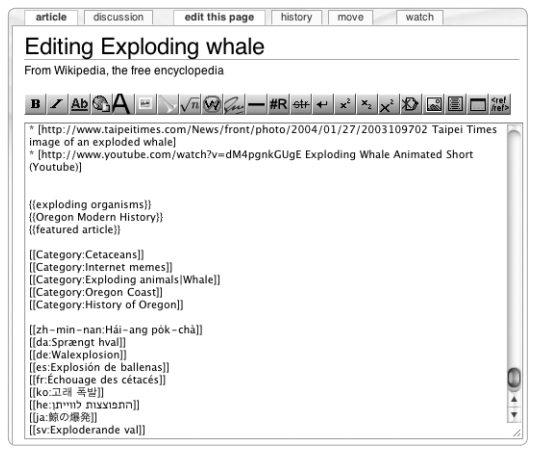
Housekeeping ⌘
When A Page Move Is Blocked
You might want to move Jolly Green Giant to Green Giant—but you’d find that Green Giant is already taken up
with a page about the company.
Green Giant to Green Giant (company)
Jolly Green Giant to Green Giant (symbol)

Housekeeping ⌘
Default Meanings
- The lesser character should not become the default meaning, however. For example Thor, the Norse god, must have
priority over Thor (Marvel Comics).
- Moves are best made from a more general title to a more particular title: from John Jones to John James Jones,
for example.
Housekeeping ⌘
Avoiding Disambiguation Pages
A square is a special kind of rectangle where all four sides have equal length
To avoid the dab page,
A square is a special kind of rectangle where all four sides have equal length;
Housekeeping ⌘
Controlling Category Sorting
Pages within categories are displayed alphabetically by the first word of the page title, but this can be modified by sort
Housekeeping ⌘
Categories and Template for Redirects
- Links for redirect pages on a category page appear in italics.
- If you click the link, you go to the page to which the redirect leads (not to the article with the title you expected).
For example,
Charles Louis-Napoléon Bonaparte is a redirect to Napoleon III of France.
The category tag [ [ Category:Presidents of France|Bonaparte ] ] could be included in the redirect, so the category page would
include the correct name for his time as president and be sorted under Bonaparte.
Housekeeping ⌘
Process-style Resolutions
- Category deletion
- Problem redirects
- Disagreement about default meanings
- Merges without consensus
- Contested title changes
- Fixing cut-and-paste moves
6: Images,Templates, and Character ⌘
Images and Media Files
- Finding and Adding Images
- Using Images
- Using Multimedia Files
Templates
- Using Templates
- Using Parameters
- How Templates Work
- Varieties of Templates
Laying Out Articles
- Tables
Special Syntax
- HTML and CSS
- Mathematical Formulas
- Variables and Magic Words
Images and Media Files ⌘
Finding and Adding Images
Searching for images to use
- The Wikimedia Commons is probably the best place searching for images or media files.
- Browse images using categories on Wikipedia
- Search image descriptions directly on Wikipedia by searching the Image namespace

Images and Media Files ⌘
Finding and Adding Images
Image Licenses and Fair use
If you can’t find an existing image for your article, you can upload a new one.
Images and Media Files ⌘
Finding and Adding Images
All images you upload to Wikipedia must meet one of four criteria:
- You own the rights to the image (that is, you created it), and you agree to release the image under a free license, such as the GFDL.
- If you didn’t originally create the image, you can prove that the copyright holder has licensed the image under an acceptable free license, such as the GFDL.
- You can prove that the image is in the public domain; this is the case with US government–created work such as photos from NASA, which are automatically placed in the public domain.
- You produce a convincing fair-use rationale.
Images and Media Files ⌘
Finding and Adding Images
Images and Media Files ⌘
Using Images
You can insert an image on a Wikipedia page.
[ [ Image:nameofimage.jpg ] ]
Set image alignment
[ [ Image:nameofimage.jpg|left or right ] ]
Image as a thumbnail, resize the image to 180 pixels with space for a caption at the bottom
[ [ Image:nameofimage.jpg|thumb|An image caption ] ]
[ [ Image:nameofimage.jpg|right|thumb|An image caption ] ]
Images and Media Files ⌘
Using Images
This will display the image at 300 pixels, left-aligned
[ [Image:nameofimage.jpg|300px|left|This is an image ] ]
Gallery
Display many small images together
-
Caption
-
Caption
-
Caption
Images and Media Files ⌘
Using Multimedia Files
Audio files can be very helpful for some topics.
[ [Media:nameoffile.ogg ] ]
For example, Wikipedia has numerous files designed to help you pronounce Chinese names properly.
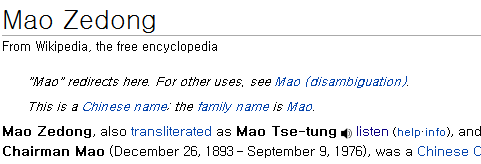
Templates ⌘
Using Templates
- The same style of footer or boxed graphic to show up across all articles on a given topic
- Consistently leave certain messages on user talk pages
Templates ⌘
Using Parameters
Parameters Indicate or allow you to include variables that are going to be different for each template use. Template:WPBooks
Many templates have optional parameters. Template:Cleanup
Templates ⌘
Varieties of Templates
Infobox
Organizes information to display it cleanly to the reader
Standardizes the presentation of essential facts about an article topic. 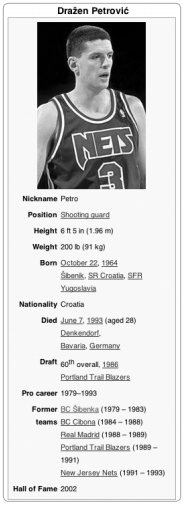
[ [ Template:Infobox NBA Player ] ]
Templates ⌘
Using Parameters
Laying Out Articles ⌘
Tables
- The easiest way to lay out any kind of data array or multicolumn, multirow list
- Should always be used judiciously as they make the wikisyntax less readable
Laying Out Articles ⌘
HTML and CSS
HTML
- should not generally be used for formatting tables or laying out pages.
- For most tasks that HTML can do, customized MediaWiki syntax exists instead.
Cascading Style Sheet (CSS)
- is also widespread, primarily in formatting templates.
- The look of the site as a whole is styled with CSS skins that are individually customizable by any logged-in user
Laying Out Articles ⌘
Variables and Magic Words
Variables
Are just a subset of the larger class of so-called magic words
Magic Words
Are symbols recognized by the MediaWiki software
7: The Life Cycle of an Article ⌘
Birth of Article
Deletion
Maintenance Tagging
Editing Improvements
Potential Merge
Discussion and Content Tags
Categories
Bots Arrive
Incoming Wikilinks
Artie Is Moved
In Good Times
In Bad Times
Bad Times, and a True Story
Search Engines Find the Article
New Relatives
Getting the Picture
Good Article
Part III: Community ⌘
8: Becoming a Wikipedian
9: Community and Communication
10: Policy and Your Input
11: Disputes, Blocks, and Bans
8: Becoming a Wikipedian ⌘
- On Arrival
Registering an Account
Setting Your Preferences
- User Pages, Watchlists, and Edit Count
User Page Content
Watchlists
Contribution History and Counting Edits
- Users and Administrators
User Levels
Administrators
Requesting Help from an Administrator
On Arrival ⌘
Registering an Account
Having a Username vs. Editing as an IP user ?
It is recommended for all contributors to create an account!
- Gives you an identity on the site that is distinct from your IP address
- Having a username also makes it easier to communicate with others and participate in the Wikipedia community
- Registered users also gain some editing privileges.
On Arrival ⌘
User Pages, Watchlists, and Edit Count ⌘
Guidelines
Wikipedia has some limitations on what you can post to your user page [ [Wikipedia:User page] ]
No Blogging, No Activist Campaign and No Grievances
User Talk Pages
Where other people can leave you messages about your work, articles that you are working on, and so on.
User Pages, Watchlists, and Edit Count ⌘
Watchlists
Watchlist
- Defines your own personal corner of the huge Wikipedia site.
- Displays a set of recent changes for the subset of pages that you have specifically selected to watch.
- You can easily scan a list of the edits made to the pages or articles you are interested in, without having to go to
each
- of those pages individually.
- You can help defeat vandalism and keep the site tidy while monitoring topics of greatest interest to you.
- Your watchlist is private—only you can access it.
User Pages, Watchlists, and Edit Count ⌘
User Pages, Watchlists, and Edit Count ⌘
User Pages, Watchlists, and Edit Count ⌘
Contribution History and Counting Edit
Contribution History
Any contributor’s history of edits and total edit count is publicly accessible; a record of all changes made by any account
or IP address is kept.
Edit Count
The total number of page changes that a user has made, usually counting edits in all namespaces.
Having a certain edit count may bring suffrage in elections
User Pages, Watchlists, and Edit Count ⌘
Contribution History and Counting Edit
Editcountitis
- The author of the original tool for counting edits noted that editcountitis, or an unhealthy obsession with the notion of edit count, can be fatal
- Is often a symptom of Wikipediholism
Wikipediholism Excessive devotion to an online collaborative encyclopedia.
Worry more about the quality of your edits than the quantity!
Users and Administrators ⌘
User Levels
IP Addresses
Visitors who have not created an account or signed in to an existing account can still do most things, including the most
important tasks: editing articles and helping with Wikipedia maintenance.
Signed-in Users
- The majority of Wikipedia contributors are signed-in users
- Can do everything IP addresses can do
- Upload files, start new articles,move pages and edit semi-protected pages
Autoconfirmed Users
Users and Administrators ⌘
User Levels
Administrators
Usually good, helpful people to ask about procedures and for help in editing dispute
Bots
An automated program or script that can do some routine tasks
The status of an account that is only used to enable mass automated edits
Users and Administrators ⌘
Administraters
Administrators
- Often known as sysops (for system operator) or just admins and sometimes referred to as janitors, are editors whose
editing privileges have been increased
- Administrator powers are given to editors who have proven themselves to be experienced and trustworthy though a process
called Requests for Adminship (RfA)
- Adminship is a duty, not a prize.
Users and Administrators ⌘
Requesting Help from an Administrator
Anyone can legitimately request help from an admin, whether on policy, technical matters, or when troubled by another editor
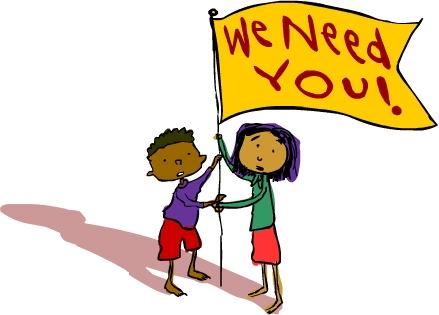
9: Community and Communication ⌘
- Wikipedia’s Culture
Assumptions on Arrival
Random Acts of Kindness
The Open Door
Soft Security
Communicating with Other Editors
Wikiphilosophies
Funny Business
- Who Writes This Thing Anyway?
Demographics
Systemic Bias
Operational Analysis: Raul’s Laws
Practical Values, Process, and Policy
Wikipedia's Culture ⌘
Aussumptions on Arrival
Assume Good Faith (AGF)
- Unless you have strong evidence to the contrary, you should always assume that people who work on the project are trying
to help it, not hurt it.
- Assuming good faith means that if someone does not seem to be following policy, assume that he or she simply made a
mistake rather than deliberately disrupted the encyclopedia; always give an editor the benefit of the doubt.
Wikipedia's Culture ⌘
Random Acts of Kindness
- Welcoming new editors on their talk page. Simply saying, “Hello, good work!” when you notice a helpful edit from a new
contributor is encouraging
- Giving each other awards for work well done.
Barnstar
a template you can add to any editor’s user talk page if you feel he or she deserves the award

Wikipedia's Culture ⌘
The Open Door
The drive to keep the community as open as possible (anyone online can edit) has shaped the whole debate about how
Wikipedia should be operated.
- Wikipedia’s success to date is entirely a function of our open community.
- Newcomers are always to be welcomed.
- ”You can edit this page right now” is a core guiding check on everything that we do.
Wikipedia's Culture ⌘
Soft Security
- Wikipedia’s security is soft, meaning security is largely reactionary.
- Bad contributions cannot be completely excluded from the site, so those cleaning up afterward rely instead on checking
contributions and reverting bad changes.
- Wikipedia uses the principle of soft security in the broadest way.
- Security is guided by the community, rather than by restricting community actions ahead of time.
- Everyone active on the site is responsible for security and quality.
Wikipedia's Culture ⌘
Communicating with Other Editors
Wikipedia has several types of pages where editors communicate with one another:
- Article talk pages for discussing article content
- User talk pages for leaving another contributor personal messages
- Project page and policy page talk pages, where individual policies or processes are discussed
- Project-wide forums for discussing Wikipedia, asking questions, or offering general proposals
- Noticeboards for raising alerts to problems or items of interest about a particular topic
- Process pages for getting feedback or taking polls on a particular kind of issue (such as deletion debates)
Wikipedia's Culture ⌘
Communicating with Other Editors
Talk Page Guidelines
- Stick to discussing the article, and save self-expression for your own user page
- Use the talk pages for discussing facts and sources.
- Be brief but not abrupt. Be specific about changes you’d like to see.
- Talk pages have a warehousing function.
- Be civil, and make no personal attacks.
- Avoid the absolute no-nos.
- Don’t delete comments, and refactor discussion only as a last resort.
- Don’t exclude newcomers.
- Problem users show themselves over time.
Wikipedia's Culture ⌘
Communicating with Other Editors
Voting and Discussing
On-Wiki Forums
Asking Questions and resolving Problems
Getting News
Mailing Lists and Internet Relay Chat
Meetups and Conferences
Wikipedia's Culture ⌘
Wikiphilosophies
Who Writes This Thing Anyway? ⌘
Demographics
Wikipedia’s editors are any recruits who can show that they have the talent to write and upgrade encyclopedia articles
Whether you’re a teenager or a tenured Ph.D. doesn’t matter on Wikipedia
Who Writes This Thing Anyway? ⌘
System Bias
Systemic Bias
A term used on Wikipedia to describe the concept that notions of notability and breadth of article coverage both reflect
the community of editors and their demographic
Who Writes This Thing Anyway? ⌘
Operational Analysis: Raul's Law
- Much of Wikipedia’s content and all of the day-to-day functions are overseen by a small core of the most dedicated
contributors.
- Content brings visitors. Some of them will become contributors. Some of them will become dedicated users.
- You cannot motivate people on a large scale to write about something they don’t want to write about.
- Over time, contentious articles will grow from edit-war inspiring to eventually reach a compromise that is agreed upon by
all the editors who have not departed in exasperation.
- As time goes on, the rules and informal policies on Wikipedia tend to become less and less plastic and harder and harder
to change
Who Writes This Thing Anyway? ⌘
Practical Values, Process, and Policy
Wikipedia has no centralized control, yet the site progresses and is successful.
Practical Values:
- The worth of open information that is outside copyright barriers (and, therefore, probably support for free software too)
- A commitment to sharing knowledge worldwide
- Multiculturalism, diversity, and multilingualism
- Fairness in representing diverse points of view
10: Policy and Your Input ⌘
- The Spirit of Wikipedia
The Five Pillars
Ignore All Rules and Be Bold
- What Is Policy?
Official Policy
How Policies Are Created and Developed
How to Interpret Policies and Guidelines
- Letter of the Law
List of Policies
List of Guidelines
Seven Policies to Study
The Spirit of Wikipedia ⌘
The Five Pillars
The five pillars of Wikipedia, a harmonious summary of the principles that guide the site.
- Wikipedia is an encyclopedia (not anything else).
- Wikipedia has a neutral point of view (the NPOV policy).
- Wikipedia is free content that anyone may edit. (All Wikipedia content is freely licensed and free of charge, and content
is freely editable.)
- Wikipedia has a code of conduct. (Editors should behave civilly toward each other.)
- Wikipedia does not have firm rules. (The editing community can change the rules.)
The Spirit of Wikipedia ⌘
Ignore All Rules and Be Bold
Be Bold exhorts contributors to be bold in editing pages!
- This philosophy is fundamental to Wikipedia.
- With no top-down structure, work gets done, not because it was assigned as a task but because someone decided to be bold
and do it.
- Although Be Bold is not an excuse to contradict standard policies and procedures, don’t be shy about improving the site.
What is Policy? ⌘
Official Policy
Official Policy
- Is a category [ [ Category:Wikipedia official policy ] ].
- Wikipedia has no body that can make a policy official; this declaration is based on consensus
What is Policy? ⌘
How Policies Are Created and Developed
- Wikipedia does not have a special area just for drafting legislation.
- The starting point for a new policy may be a new project page in the Wikipedia namespace or possibly an essay that makes
sense to other editors and begins to be referenced in discussions.
- Policies and guidelines are then developed over time by interested editors through a consensus-based process.
- Policies and guidelines are typically altered to reflect changing practice on the site or to solve a problem that has
arisen.
- If consensus for a new proposed policy can’t be reached, the proposal will be dropped.
What is Policy? ⌘
How to Interpret Policies and Guidelines
